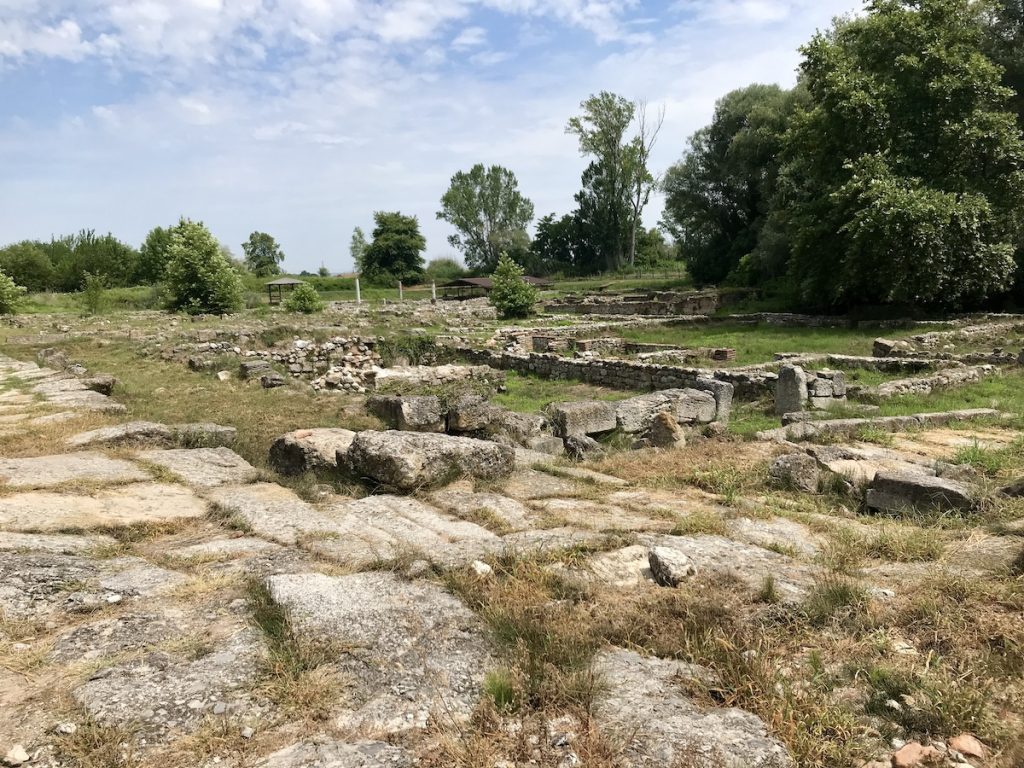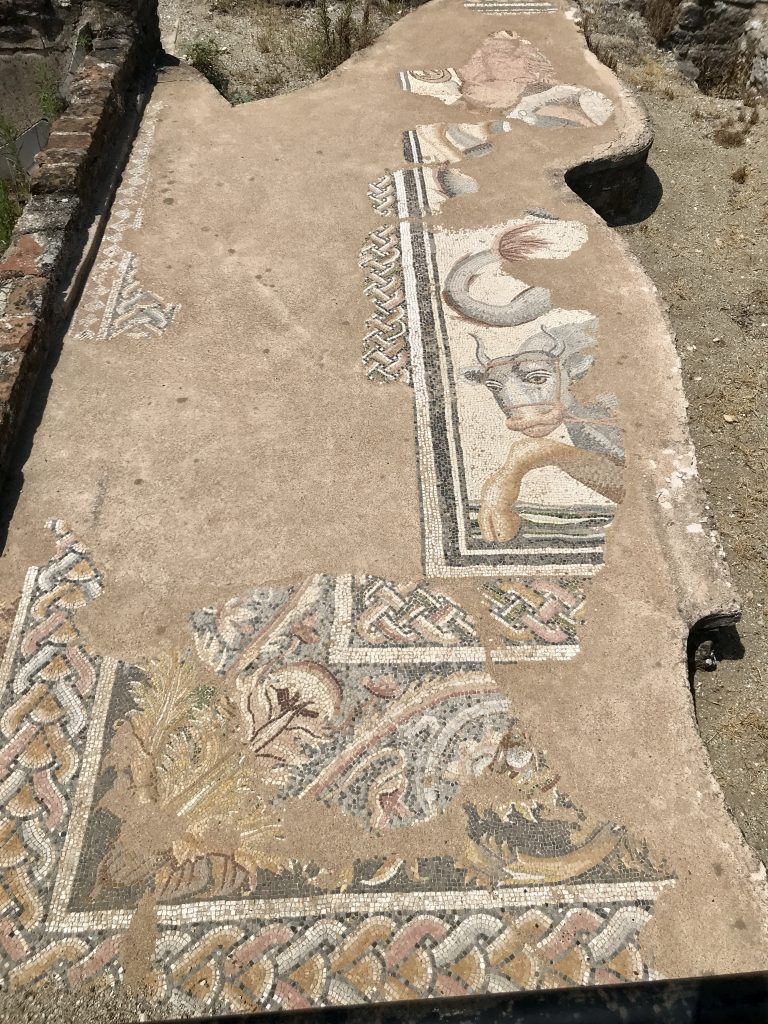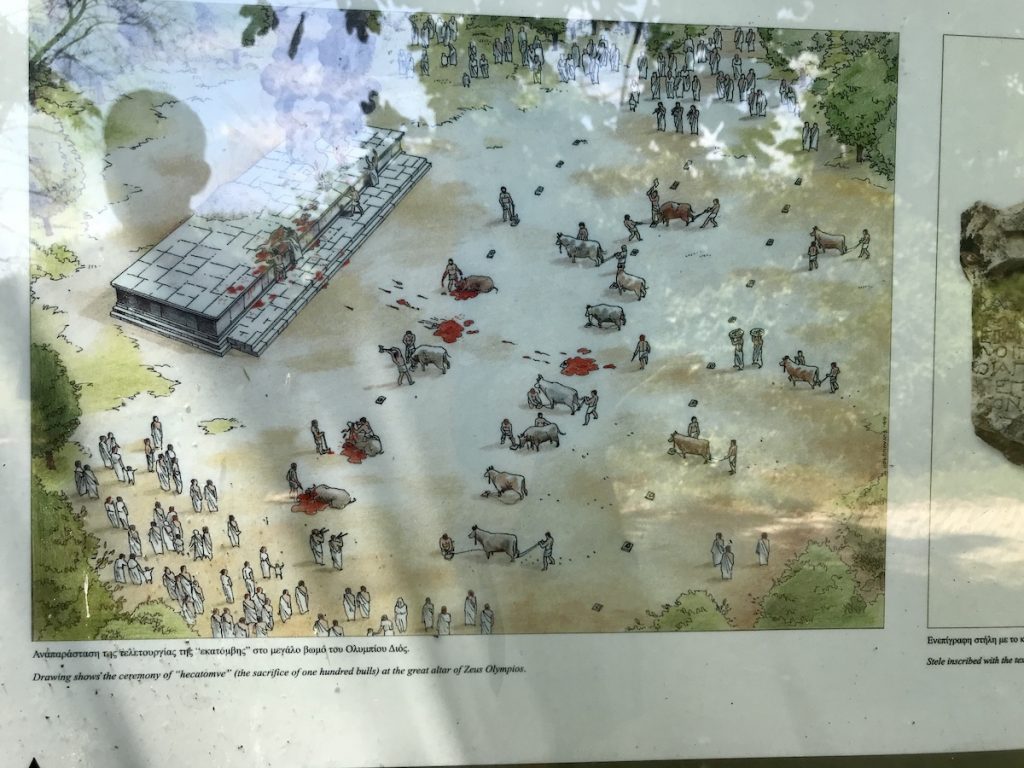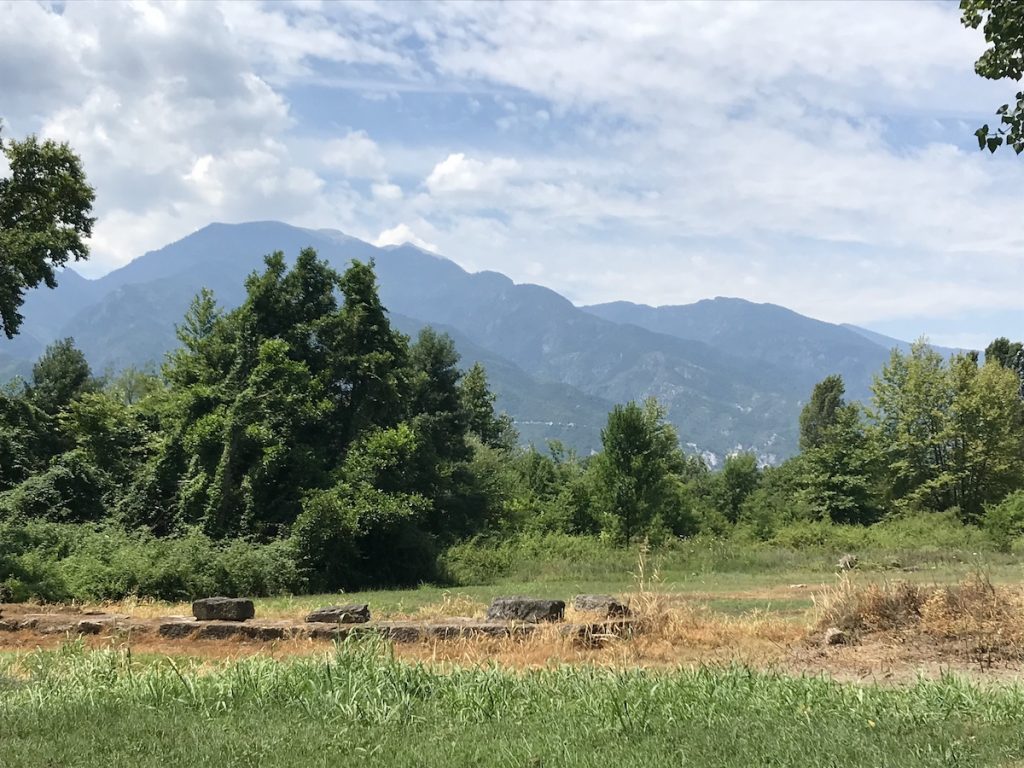
I took a bit longer than normal to haul myself out of bed the day after we climbed Mount Olympus.
My legs had already begun tightening up, and my hip flexors felt like guitar strings. But there was no time for strumming with a three hour drive ahead of us.
We had one stop to make on the slopes below the mountain before hitting the highway to Halkidiki.
Dion was once the most important religious centre in the province of Macedonia. It housed a sprawling residential quarter, with shops, bathhouses and theatres. But it was the settlement’s many sanctuaries that put it on the ancient map.
Chief among them was the sanctuary of Zeus Olympios, built in a sacred grove that had been consecrated to the king of the gods. Its central square held a 22m long altar where sacrificial animals were tied to metal rings before being offered to the god.

The most important was the ‘hecatomve’ where 100 bulls were sacrificed in what must have been a blood-soaked mess.
Dion also housed a large sanctuary to Demeter, goddess of agriculture, as well as an Asclepion, where the afflicted would come to be healed by the Greco-Roman god of medicine.
Nothing moved in the residential section of the ruins, only a tortoise crossing a grassy path, and a distant group of children on some sort of school tour, but their shrill chatter was gone nearly as quickly as they’d arrived. And when they vanished, the residential quarter baked in the silence of sun scorched stones.

I could understand why religious sanctuaries had been set up in this place of running water and shaded groves. Those tiny ponds and sacred springs had an air of sanctity about them, a sense of connection with the natural world. For a while, I forgot the heat and the drive and my aching legs.
I drank deep from a fountain that had been placed nearby, absorbing the sacred waters into my cells, and then I stood by the remains of the altar where Alexander the Great made his sacrifice to Zeus before setting out to conquer Asia in 334 BC.
There wasn’t much left of the site, but the slopes of Mount Olympus towered over it all. I had been walking up there in the clouds less than a day before.

